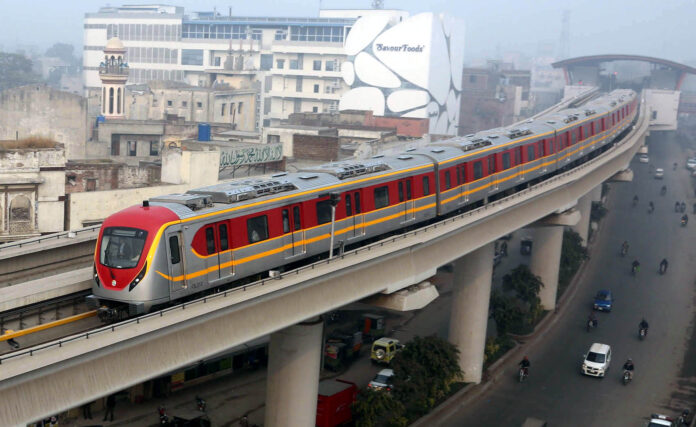The first urban railway system Orange Line Metro Train (OLMT) in Lahore is going to go solarized to save the soaring more than Rs 1.9 billion annual electricity bill being consumed on entire operationalization of Metro Train.
Punjab Mass Transit Authority (PMAT) is operating OLMT since the train was handed over to it by the Chinese contractor CR-NORINCO, a joint venture between China State Railway Group (CR) and China North Industries Corporation (NORINCO) in 2020, CEN reported.
In an interview, General Manager (operation) of PMAT, Ozair Shah said that electrifying OLMT with solar system is inevitable as the per unit cost of electricity varies between Rs. 18 to Rs. 21 that is not viable to run the entire function of OLMT for longer time.
Many conceptual plans are on the cards to materialize solar system for Metro Train weighing up their merits and demerits, he added.
“One of the plans is to build up a solar plant with the capacity of 50 MG or 70 MG. The solar plant will activate a mechanism of input to output through WeLink to power up OLMT instead of using traditional electricity apparatus,” he said.
After the operationalization of OLMT, its total ridership has exceeded 20 million. It has achieved advanced operating international standards with 90,000 train trips, covering a total distance of 12 million kilometers, with trip efficiency at 99.9% and a punctuality rate at 99.9%. Orange Line Metro Railway Project has 26 stations and track spanning over 27 kilometers long.
In addition, travel efficiency of the citizens was greatly improved, and journey of the entire route was reduced from 2.5 hours to only 45 minutes.
In addition, the operation of the orange line is playing its role in reducing the use of old cars within the city, reduce emission of gases, improve environmental pollution, and promote the green and sustainable development of the city.
Orange Line Metro is driven by all electric energy to achieve zero pollution and zero emission. It is estimated that the annual fuel emission of gases will be reduced by 30,000 tons.























